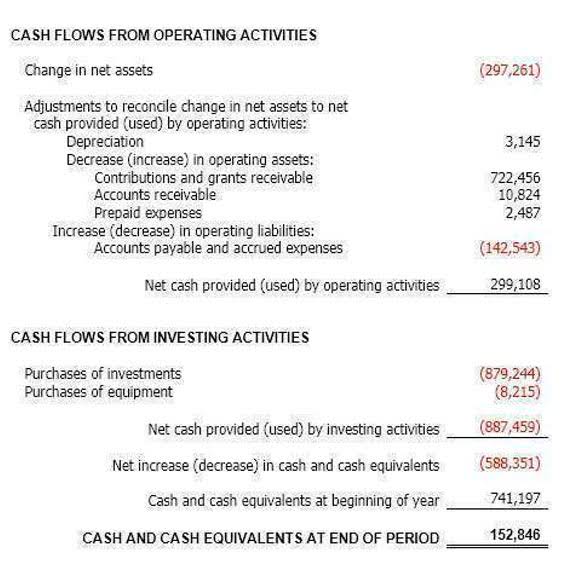
When following IFRS standards, companies have a choice of how they categorize dividends. Dividends paid can be put in either the operating or financing section, and dividends received in the operating or investing section. In effect, this facilitates the standardization and comparability of gaap vs ifrs income statement revenue recognition across different businesses and industries. The primary difference between the two systems is that GAAP is rules-based and IFRS is principles-based. IFRS is standard in the European Union (EU) and many countries in Asia and South America, but not in the United States.
China, India, and Indonesia have national accounting standards that are similar to IFRS, while Japan allows companies to follow the standards voluntarily. In the United States, foreign listed companies may use IFRS and are no longer required to reconcile their financial statements with GAAP. US GAAP and IFRS are the two predominant accounting standards used by public companies, but there are differences in financial reporting guidelines to be aware of. Under IAS 1[1], the income statement is the primary financial statement used to provide an understanding of a company’s performance and operations over a defined period of time. Because of its importance, its format is often debated and scrutinized by preparers, users, regulators, standard setters and others.
Recognition of Accounting Elements
Lastly, if presenting expenses by function, companies are required to include additional information on the nature of expenses (e.g. depreciation, amortization and staff costs) in the notes to the financial statements. Describing events or items on the income statement as ‘unusual or exceptional’ is one difference between the IFRS vs GAAP requirements for income statement presentation. Unusual items can include discontinued operations, lawsuits, damage from natural disasters, and restructuring costs. IFRS does not describe events or items of income or expense as exceptional or unusual.
We also allow you to split your payment across 2 separate credit card transactions or send a payment link email to another person on your behalf. If splitting your payment into 2 transactions, a minimum payment of $350 is required for the first transaction. Our easy online application is free, and no special documentation is required. All applicants must be at least 18 years of age, proficient in English, and committed to learning and engaging with fellow participants throughout the program.
Income Taxes
This was eventually exposed in 2020, in which TSAI’s revenue from software license fees saw an immediate 16.1% fall post-adoption of SOP 97-2. Under US GAAP, both Last-In-First-Out (LIFO) and First-In-First-Out (FIFO) cost methods are allowed. However, LIFO is not permitted under IFRS because LIFO generally does not represent the physical flow of goods. IFRS generally uses the expected value in its measurement of the amount of the liability recognized, while the amount under US GAAP depends on the distribution of potential outcomes. US GAAP and IFRS also differ with respect to the amount of the liability that is recognized.
- The Securities and Exchange Commission won’t switch to International Financial Reporting Standards in the near term but will continue reviewing a proposal to allow IFRS information to supplement U.S. financial filings.
- International Financial Reporting Standards (IFRS) are issued by the International Accounting Standards Board (IASB), and they specify exactly how accountants must maintain and report their accounts.
- As such, the same scenario can lead to differences in the recognition, measurement and even disclosure of contingent liabilities if the company was reporting under US GAAP or IFRS.
- Discounting of revenue is another factor in the differences between IFRS vs GAAP income statements.
- However, there are important differences to be aware of when GAAP-using entities are consolidating, reporting to, or negotiating with IFRS-using entities.
- Even though the IFRS does not define gross profit, operating results, or many other common subtotals, there’s flexibility under this standard when adding and defining new line items in the income statement.
Under a single-step format, the classification of all expenses on the income statement is done by functions, and then those functions are deducted from the total income in order to derive income before tax. Consequently, the theoretical framework and principles of the IFRS leave more room for interpretation and may often require lengthy disclosures on financial statements. On the other hand, the consistent and intuitive principles of IFRS are more logically sound and may possibly better represent the economics of business transactions. In the United States, if a company distributes its financial statements outside of the company, it must follow generally accepted accounting principles, or GAAP.
Difference between GAAP and IFRS
However, in GAAP, unlike IFRS, transactions of an unusual nature are defined as possessing a high degree of abnormality. A type of item that is clearly unrelated to, or only incidentally related to, the normal and usual activities of the company can be defined as unusual. Under GAAP, unusual or infrequent transactions are presented in the income statement or disclosed in the notes. International Financial Reporting Standards (IFRS) are issued by the International Accounting Standards Board (IASB), and they specify exactly how accountants must maintain and report their accounts. IFRS was established in order to have a common accounting language, so business and accounts can be understood from company to company and country to country.
- For professionals in non-accounting roles, understanding what’s behind an organization’s numbers can be immensely valuable.
- Dividends paid can be put in either the operating or financing section, and dividends received in the operating or investing section.
- This edition of IFRS compared to US GAAP includes the new requirements for insurance contracts, which are now effective in 2023.
- Some of the differences between the two accounting frameworks are highlighted below.
- Deciding which set of standards to use depends on whether your company operates in the US or internationally.
- Nevertheless, deciding which set of standards to use when making financial reports like the income statement would depend on whether the company operates in the US or internationally.
